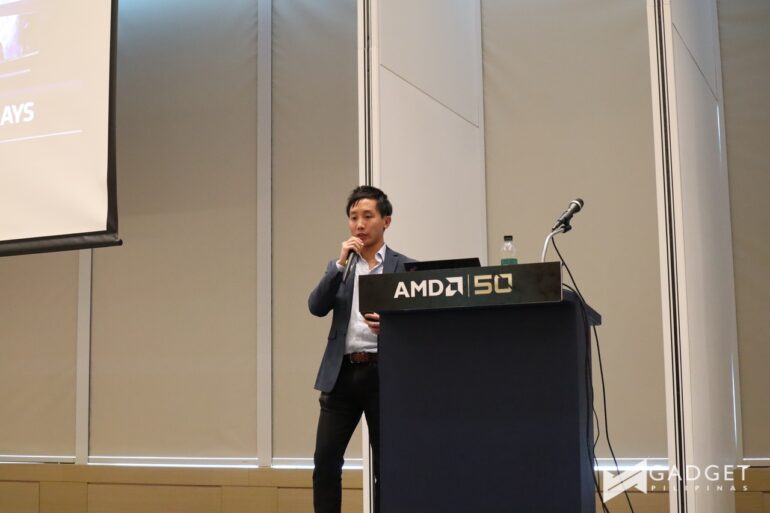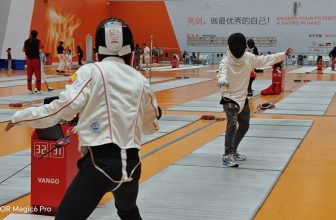NVIDIA’s Ray Tracing Dilemma
Perhaps, you read in some of our articles that there aren’t enough games in the market that feature real time ray tracing. If you bought an RTX 2080 or RTX 2080 Ti, it’s either you’re really into getting performance video cards or you’re too hopeful that more games will become available that will let you accept that you did the right purchase decision.
 Proponent to the graphics cards that support ray tracing is NVIDIA. They paved the way of this new plane that is set to be the new standard of current and next gen graphics. Today, while NVIDIA enjoys this pride of being first in the market to release graphics cards that support hardware ray tracing, they suffer a rare case of first-mover disadvantage due to low adoption rate. This is evidenced by NVIDIA’s revenue in the Gaming segment, and disappointing sales of both RTX 2070 and RTX 2080 series.
Proponent to the graphics cards that support ray tracing is NVIDIA. They paved the way of this new plane that is set to be the new standard of current and next gen graphics. Today, while NVIDIA enjoys this pride of being first in the market to release graphics cards that support hardware ray tracing, they suffer a rare case of first-mover disadvantage due to low adoption rate. This is evidenced by NVIDIA’s revenue in the Gaming segment, and disappointing sales of both RTX 2070 and RTX 2080 series.
| ($ in millions) | Q1 FY20 | Q4 FY19 | Q1 FY19 | Q/Q | Y/Y |
| Gaming | 1055 | 954 | 1723 | 10.59% | -38.77% |
| Professional Visualization | 266 | 293 | 251 | -9.22% | 5.98% |
| Data Center | 634 | 679 | 701 | -6.63% | -9.56% |
| Auto | 166 | 163 | 145 | 1.84% | 14.48% |
| OEM & Other | 99 | 116 | 387 | -14.66% | -74.42% |
| TOTAL | 2220 | 2205 | 3207 | 0.68% | -30.78% |
In reality, there is a mix bag of reasons why there’s low turnout of sales, which highly contributed to the disappointing YOY and QOQ revenue of NVIDIA. The issue was communicated in February 2019, and it seems to be the case 4 months later (sources: NVIDIA Quarterly Revenue Trend, TomsHardware):
- Quantity of games that support ray tracing at launch: consumers are constantly on the lookout for games that feature real ray tracing.
- Low adoption rate since the new video cards by NVIDIA – specifically the more powerful ones from 2070 to 2080Ti – are downright expensive
- The Gaming segment by NVIDIA is the biggest revenue contributor, and decline GPU sales dented their fiscal performance.
Ray Tracing as a A Flamboyant Pitch
NVIDIA paved the way to making Ray Tracing as the new standard of computer graphics and gaming. They have successfully introduced ray tracing to consumers in such a grand and flamboyant, albeit expensive way. As a company who hasn’t been any console maker’s brand of first choice when it comes to GPUs and APUs, NVIDIA successfully introduced a new form of graphics standard. However, they failed to “pitch” themselves as the company that will manufacture APUs for next generation consoles.
 Before and during E3 2019, Sony and Microsoft announced that their upcoming consoles will be powered by an APU with next generation Zen Core architecture for processor and rDNA architecture for graphics card by AMD. There’s a big catch to this surprise though: both companies are referring to next-gen hardware, which cannot be found in the existing generation of AMD products. If we zero onto AMD’s graphics. cards, none of the existing ones support realtime hardware ray tracing.
Before and during E3 2019, Sony and Microsoft announced that their upcoming consoles will be powered by an APU with next generation Zen Core architecture for processor and rDNA architecture for graphics card by AMD. There’s a big catch to this surprise though: both companies are referring to next-gen hardware, which cannot be found in the existing generation of AMD products. If we zero onto AMD’s graphics. cards, none of the existing ones support realtime hardware ray tracing.

Simon Ng, Product Manager for Radeon Technologies Group
During the Asian Media Briefing about Radeon and Navi in South Korea, we got the chance to interview Simon Ng, Product Manager for Radeon Technologies Group. He said that while he cannot comment about the details of the next gen APU’s for Playstation 5 and Microsoft’s Project Scarlett, he confirmed that they are closely working with the companies to build custom APUs that will support their respective hardware. Ng further explained that their success in having Sony and Microsoft on board to produce next gen APUs is brought about by “right timing and doing things the right way”.
“Right timing and Doing Things the Right Way”
AMD comes in at the right timing of producing GPUs that support shader-based ray tracing. They remain adamant yet positive of not releasing GPUs with real ray tracing support because “it isn’t still the right time”. Currently, there are only about 3 to 4 games that hardware-accelerated real tracing, and the rest are DLSS implementations.
Deep Learning Super Sampling (DLSS) is an NVIDIA RTX technology that uses the power of AI to boost your frame rates in games with graphically-intensive workloads. With DLSS, gamers can use higher resolutions and settings while still maintaining solid framerates. [source] The process entails and requires utilization of GPU, which gives off impressive bump in graphics and even performance, or a significant scale in performance dip.

AMD Radeon RX5700XT
AMD’s FidelityFX, as they claim, performs differently. It uses open-source image utility toolkit that improves and optimizes contrast and image sharpening without a dip in performance. Contrast Adaptive Sharpening (CAS) lifts more details by lessening blurs produced by motion. This gives players a more immersive gameplay by being able to see greater and full detail of what they are playing. Image Sharpening, on the other hand, boosts texture sharpness so it will remain faithfully sharp when the game is even upscaled to 1440p.
 Adoption rate of AMD’s graphics technology isn’t going to be a problem. Game developers have signed up to produce games that is compatible with FidelityFX. AMD also enabled the developers to easily adopt to the technology through their open source toolkit. This will enable developers to focus more on what the game is, and not much on how it is made
Adoption rate of AMD’s graphics technology isn’t going to be a problem. Game developers have signed up to produce games that is compatible with FidelityFX. AMD also enabled the developers to easily adopt to the technology through their open source toolkit. This will enable developers to focus more on what the game is, and not much on how it is made
Focus on what game is, not how it is made.
Minding how the game is made is just as important as minding what the game is all about. However, gamers focus more on what the game is, i.e., content, story and gameplay, than how it is made. If developers focus more on how it is made, the game suffers “all face, no substance” issue. Game such as Anthem and Shadow of the Tomb Raider somehow suffered the same case, in my opinion; and as banner products with real time ray tracing and DLSS, the issue just put the studios and NVIDIA to bad light.
 AMD wants to make things differently this time with FidelityFX while waiting for the right time to release GPUs that support hardware-accelerated ray tracing. I get this wholeheartedly, and I appreciate how AMD is making an effort to do things rightfully and timely.
AMD wants to make things differently this time with FidelityFX while waiting for the right time to release GPUs that support hardware-accelerated ray tracing. I get this wholeheartedly, and I appreciate how AMD is making an effort to do things rightfully and timely.
[su_spoiler title=”Editorial Note” open=”yes” style=”simple” icon=”arrow”]I attended AMD’s Asian Media Conference in South Korea to learn more about AMD’s latest technologies. AMD covered travel and accommodation costs.[/su_spoiler]
Giancarlo Viterbo is a Filipino Technology Journalist, blogger and Editor of gadgetpilipinas.net, He is also a Geek, Dad and a Husband. He knows a lot about washing the dishes, doing some errands and following instructions from his boss on his day job. Follow him on twitter: @gianviterbo and @gadgetpilipinas.














